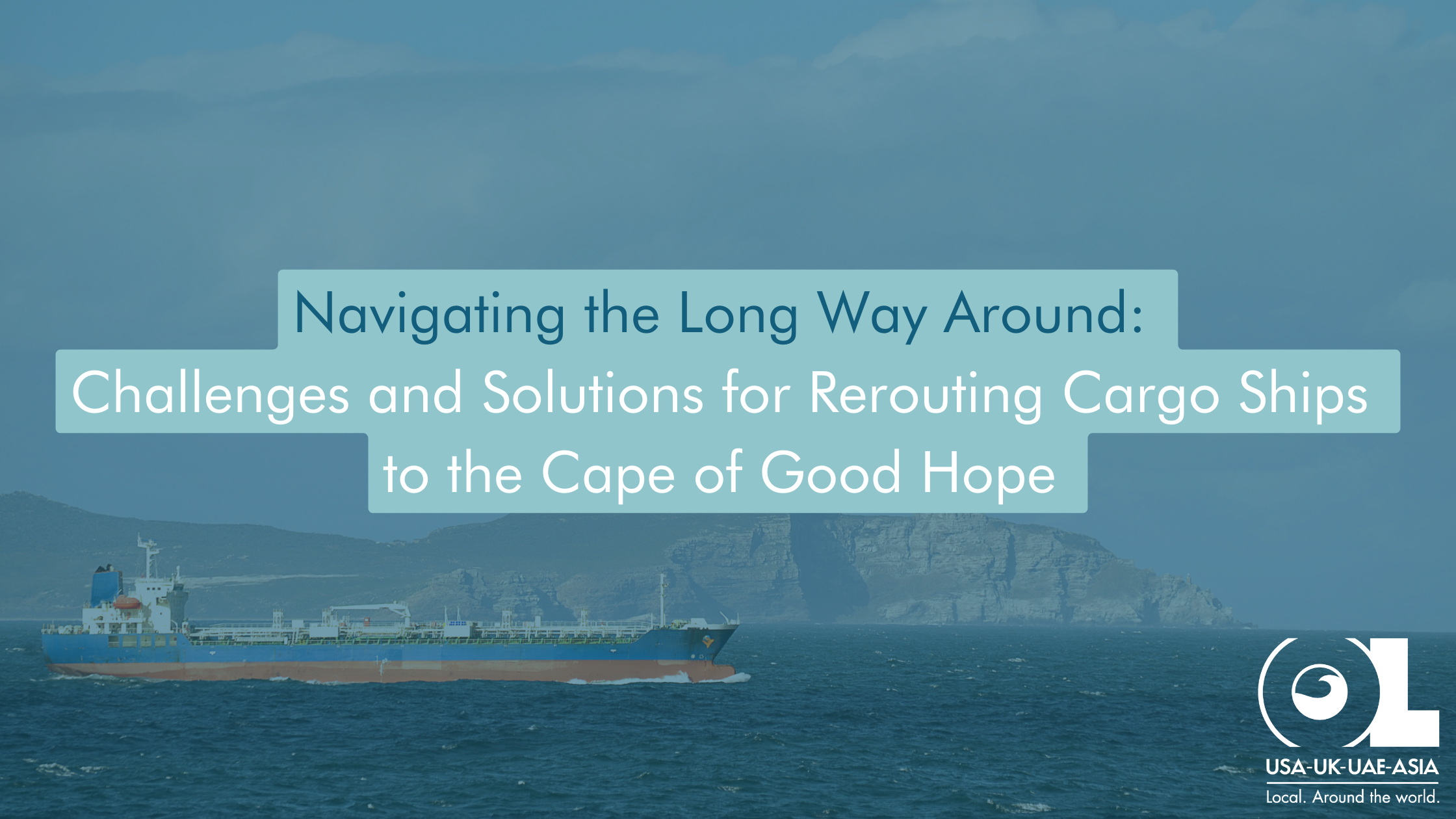In the fast-paced world of global trade, the closure of key maritime routes can send shockwaves through supply chains, affecting businesses worldwide. Recently, closures in the Red Sea/Suez Canal have forced cargo vessels to reroute through the Cape of Good Hope, presenting significant challenges for logistics operations. As a trusted third-party logistics (3PL) provider, we understand the critical role that the Suez Canal plays in facilitating efficient trade routes and the complexities involved in rerouting cargo. In this blog post, we’ll explore the challenges faced by businesses amidst these reroutes and discuss strategic solutions offered by 3PL providers to navigate these obstacles effectively.
Understanding the Impact
The closure of the Red Sea/Suez Canal has had an immediate impact on shipping times, costs, and logistical operations. Cargo vessels rerouting through the Cape of Good Hope face longer transit times, resulting in delays in delivery schedules and increased fuel costs. These challenges ripple through supply chains, disrupting inventory management, warehouse operations, and ultimately, customer satisfaction. Businesses worldwide are feeling the strain as they grapple with the repercussions of these closures.
Challenges Faced
Rerouting cargo vessels to the Cape of Good Hope presents a myriad of challenges. Longer transit times not only translate to increased fuel expenses but also heighten the risk of piracy in certain regions. Moreover, the extended journey poses logistical hurdles, impacting inventory replenishment cycles and distribution schedules. Real-world examples abound, with businesses encountering delays, inventory shortages, and mounting operational costs as they navigate these uncharted waters.
Solutions Offered by 3PL Providers
Amidst these challenges, 3PL providers play a crucial role in offering strategic solutions to mitigate the impacts of rerouting cargo vessels. Leveraging advanced technology and data analytics, 3PLs optimize shipping routes, identify alternative options, and monitor vessels in real-time to ensure efficient logistics management. With their expertise in navigating complex global supply chains, 3PL providers offer tailored solutions to overcome logistical hurdles and minimize disruptions.
Collaboration and Communication
In the intricate web of global supply chains, effective collaboration and communication serve as the linchpin for success, especially when navigating disruptions such as rerouting cargo vessels. Establishing transparent communication channels between shippers, carriers, and 3PL providers is paramount to streamline rerouting processes and mitigate disruptions efficiently.
Transparent communication fosters a shared understanding of the challenges and complexities involved in rerouting cargo vessels, allowing all stakeholders to proactively address issues and implement contingency plans. By maintaining open lines of communication, businesses can stay informed of any developments or changes in real-time, enabling swift decision-making and adaptation to evolving circumstances. This agility is crucial in responding to unexpected events or shifts in market conditions, minimizing the impact of disruptions on supply chain operations.
Moreover, transparent communication builds trust and fosters collaboration among stakeholders, laying the foundation for effective problem-solving and decision-making. By cultivating a culture of openness and collaboration, businesses can harness the collective expertise and insights of all parties involved, leading to innovative solutions and more resilient supply chains.
Collaboration and communication also extend beyond immediate challenges, encompassing long-term strategic planning and relationship-building. By engaging in regular dialogue and sharing insights on market trends, supply chain dynamics, and emerging risks, businesses can proactively identify opportunities for optimization and enhancement. This proactive approach enables stakeholders to anticipate potential disruptions, develop contingency plans, and strengthen the overall resilience of the supply chain.
Looking Ahead
As businesses navigate the challenges of rerouting cargo vessels, it’s essential to adopt a forward-thinking approach and anticipate future disruptions. Diversifying supply chain routes emerges as a critical strategy to mitigate risks associated with overreliance on specific trade routes or transportation modes. By exploring alternative routes and modes of transportation, companies can build resilience into their supply chains, reducing vulnerability to potential canal closures or other unforeseen events.
Investing in resilience entails more than just diversifying routes; it also involves enhancing infrastructure, bolstering inventory management systems, and fortifying partnerships with key stakeholders. Businesses should assess their current supply chain resilience and identify areas for improvement, whether it’s optimizing inventory levels, implementing robust risk management protocols, or investing in technology to enhance visibility and agility.
Partnering with experienced 3PL providers becomes instrumental in navigating the complexities of global trade disruptions. Leveraging the expertise of 3PLs, which have a deep understanding of supply chain dynamics and access to advanced technology and resources, can empower businesses to overcome logistical challenges and mitigate disruptions more effectively. By entrusting their logistics operations to reliable partners, companies can focus on their core competencies while benefiting from the agility and expertise of 3PL providers.
Furthermore, embracing innovation and flexibility is paramount in adapting to the ever-changing landscape of global trade. Businesses must remain agile and responsive to evolving market dynamics, technological advancements, and regulatory changes. This may involve adopting new technologies such as blockchain, Internet of Things (IoT), or artificial intelligence to optimize supply chain visibility, enhance forecasting accuracy, and streamline operations. Additionally, fostering a culture of innovation and continuous improvement within the organization enables companies to stay ahead of the curve and seize opportunities for growth amidst adversity.
In conclusion, the closure of the Red Sea/Suez Canal presents significant challenges for businesses worldwide. However, with strategic planning, collaboration, and the expertise of trusted 3PL providers, businesses can navigate these challenges and emerge stronger and more resilient. By embracing innovation and proactively addressing logistical hurdles, businesses can chart new courses and seize opportunities amidst uncertainty in the global trade landscape.



